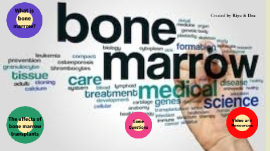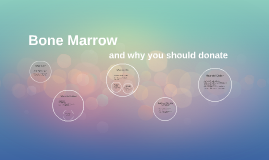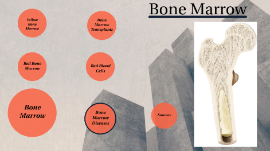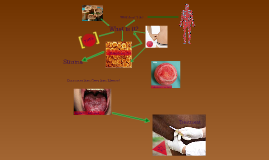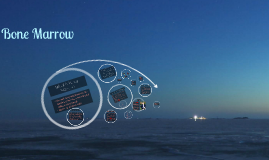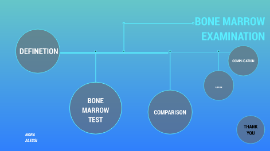Bone Marrow
Transcript: There is red marrow and yellow marrow. Red: Is where the blood cells are made. Yellow: in the hollow middles of long bones and is mostly fat. Autologous bone marrow transplant: Stem cells are removed from the patient before they receive high-dose chemotherapy or radiation treatment. The stem cells are stored in a freezer. After high-dose chemotherapy or radiation treatments, their stems cells are put back in your body to make (regenerate) normal blood cells. This is called a rescue transplant. Allogeneic bone marrow transplant: The term allo means other. Stem cells are removed from another person, called a donor. Most times, the donor's genes must at least partly match your genes. Special blood tests are done to see if a donor is a good match for you. A brother or sister is most likely to be a good match. Sometimes parents, children, and other relatives are good matches. Donors who are not related to you may be found through national bone marrow registries. Umbilical cord blood transplant: This is a type of allogeneic transplant. Stem cells are removed from a newborn baby's umbilical cord right after birth. The stem cells are frozen and stored until they are needed for a transplant. Umbilical cord blood cells are very immature so there is less of a need for matching. But blood counts take longer to recover. Anemia Bleeding in the lungs, intestines, brain, and other areas of the body Cataracts Clotting in the small veins of the liver Damage to the kidneys, liver, lungs, and heart Delayed growth in children who receive a bone marrow transplant Early menopause Graft failure, which means that the new cells do not settle into the body and start producing stem cells Graft-versus-host disease, a condition in which the donor cells attack your own body Infections, which can be very serious Inflammation and sorenes in the mouth, throat, esophagus, and stomach, called mucositis Pain Stomach problems, including diarrhea, nausea, and vomiting Bone marrow is the spongy tissue inside some of your bones, such as your hip and thigh bones. It contains immature cells, called stem cells. The stem cells can develop into the red blood cells that carry oxygen through your body, the white blood cells that fight infections, and the platelets that help with blood clotting. Donors Step one: The bone marrow cells are harvested. Step two: The patient will undergo high levels of radiation or chemotherapy to eliminate the cancer cells. Step three: The donated stem cells will be passed into your body through the central line. The process can take from half an hour to several hours to complete, depending on the type of blood cells being used. Step four: The engraftment usually occurs 15-30 days after the transplant takes place. During this period, you will need to have regular blood transfusions because you will have a low number of red blood cells. What is Bone Marrow? Bone Marrow If you have a bone marrow disease, there are problems with the stem cells or how they develop. Leukemia is a cancer in which the bone marrow produces abnormal white blood cells. With aplastic anemia, the bone marrow doesn't make red blood cells. Other diseases, such as lymphoma, can spread into the bone marrow and affect the production of blood cells. Other causes of bone marrow disorders include your genetic makeup and environmental factors. The harvest is collection of marrow cells from the patient or donor. They collect 1-2 quarts of bone marrow usually from the hip bone. Symptoms? whats it cost? Hard to find the best donor. Siblings are the best option The more siblings you have the better changes you have. Harvest Types of transplants How does it work? Who needs it? The soft fatty substance in the cavities of bones, where blood cells are produced. Made up of Stem cells References Steps of procedure Led by Dr. E. Donnall Thomas, Fred Hutchinson Cancer Research Center scientists pioneered the development of bone marrow transplantation to treat leukemia and other blood cancers. Dr. Thomas and his lifesaving work were recognized in 1990 with the Nobel Prize in physiology or medicine. Who decides and where? You need to get evaluated by your doctor to see what treatment is best. Cancer Treatment centers of America do allot of them. It may range from $10,000 to $25,000. Your transplant center will assist you in determining if your insurance will cover the testing of donors. If you don’t have this coverage, you’ll be told of your financial responsibility. Issues of rejection? Chest pain Chills Drop in blood pressure Fever Flushing Funny taste in the mouth Headache Hives Nausea Pain Shortness of breath http://www.nlm.nih.gov/medlineplus/ency/article/003009.htm http://www.nbmtlink.org/resources_support/rg/rg_costs.htm http://www.cancercenter.com/midwestern/medical-departments/hematology-oncology/?source=GOOGLEWE&channel=paid%20search&c=paid%20search:Google:Google%20-%20Western%20Core%20Terms:Procedures%3A+Bone+Marrow+T







